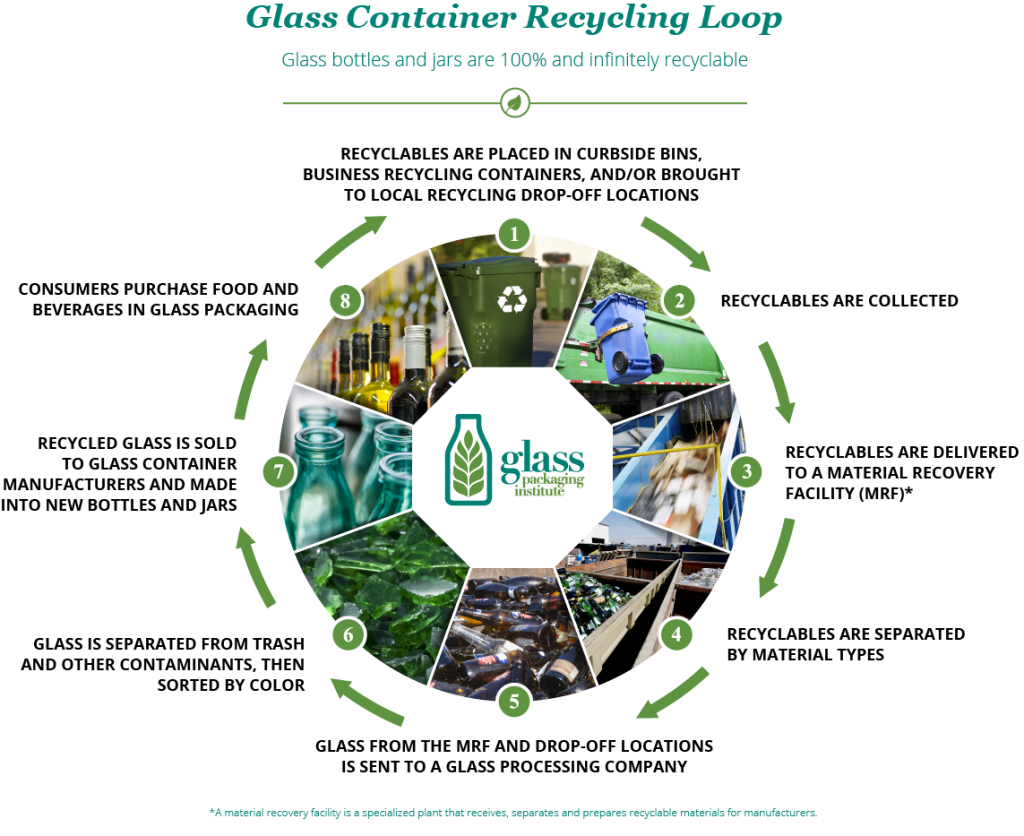This post was originally published on August 4th, 2011 by Nick Livermore and was updated on July 30, 2020 by the eco18 team.
We all remember reading about the trend in the beer industry’s move towards cans and the thorough subsequent debate. The overall consensus, it seems, is that there really isn’t much of a difference in taste or quality between a brown bottle and a can. The story is very reminiscent of an older debate – wine cork or screw cap?
So, let’s say you’re at the store and you have the choice between a glass bottle, a plastic bottle and a can of your favorite beverage. With the environment in mind, which should you choose? If only it were that simple! Let’s break it down.
The Competitors: Glass vs. Cans vs. Plastic
Production: Glass is basically melted silica (sand), which is a relatively abundant resource. Cans are made of oxides which require more intensive mining practices. Plastics production uses mainly harmful chemicals and fossil fuels. And aluminum requires extensive amounts of energy and resources collected through mining.
Decomposition: Glass poses no danger to the environment as it is essentially made of sand. Plastics are generally detrimental to the environment, but once you bust a few of the recycling myths, plastics’ effect on the environment can be decreased through proper practice and effort. Aluminum takes longer than most plastics to decompose and may leak contaminants into the environment but aluminum also is generally used for longer than plastic.
Transportation: Glass is heavy and uses more energy in transit. Cans are optimal – as they utilize the least space and weigh much less than glass. Plastic is light but utilizes more space than cans.

Reuse: Glass bottles are an excellent option and can be used over and over again. Green glass recycling, although not at its full potential in the United States, can be effective in the production of new glass materials, as shown by the diagram above. Each time you refill a plastic bottle, it releases more harmful toxins. Cans are typically more difficult to refill and have also been known to leach toxins.
Greenhouse Gas Offset of Recycling: Recycling one ton of plastic will reduce greenhouse emissions by 3.44 metric tons, while recycling the same amount of glass will only reduce emissions by .07 tons. This may seem like a lot until you take into account that producing plastic and cans is a much more polluting process.
OK, OK, so you want some judgment. Here’s what eco18 thinks:
If you’re planning on reusing the container, use a glass bottle. We like the Takeya glass covered water bottles. You can find more options here! If you’re buying in bulk, buy cans. They took a lot less energy to get there, and they will take up less room in your refrigerator! If you’re on the run, you can buy a plastic bottle. It’s easier to recycle plastic in public than glass or metal and it’s also the easiest to transport. But the number one rule – always, always recycle. And when you have the time, throw one of your reusable bottles in your bag!
 Food
Food Farmers
Farmers Sustainable Living
Sustainable Living Living Planet
Living Planet News
News